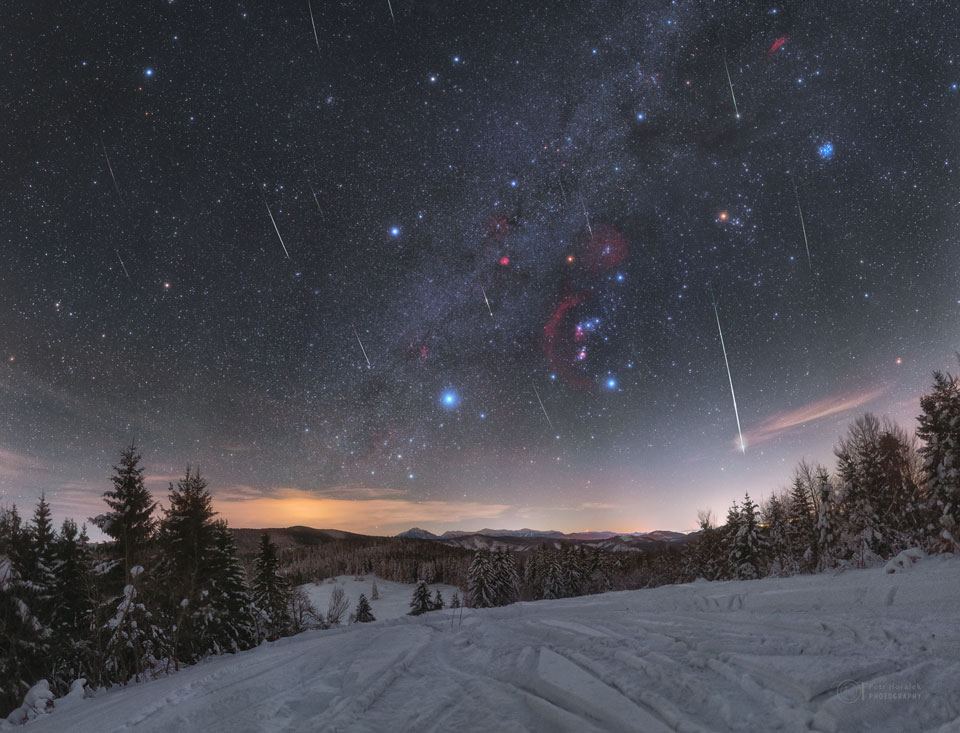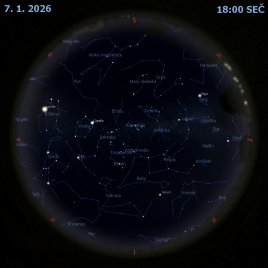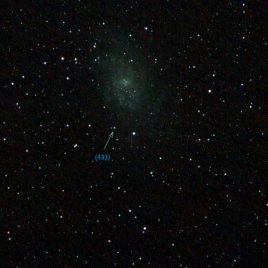Kvadrantidy přes Orion

Uznání a copyright: Petr Horálek
Proč jsou ty stopy meteorů téměř rovnoběžné? Protože všechny pocházejí ze stejného vesmírného tělesa a dají se vysledovat do jediného směru na obloze: do radiantu meteorického roje Kvadrantid. Jméno radiantu pochází od starého souhvězdí Zedního kvadrantu (Quadrans Muralis), odtud název Kvadrantidy, ale když Mezinárodní astronomická unie v roce 1922 stanovila seznam moderních souhvězdí, tak se toto souhvězdí do seznamu nedostalo. I když meteory vylétají ze souhvězdí Pastýře (Bootes), tak staré jméno radiantu zůstalo. Ať je už jméno jakékoliv, tak se Země vždycky v lednu dostane do proudu prachu a drobných kousků, které se pak v zemské atmosféře rozžhaví a zazáří jako meteory. Tento kompozitní snímek byl pořízen 4. ledna s malebnou zasněženou krajinou na Slovensku v popředí a hloubková expozice zvýraznila souhvězdí Orion v pozadí. Červená hvězda Betelgeuse je neobvykle slabá, a astronomové už několik měsíců sledují, jak slábne.
Seznam odkazů v popisu
- Wikipedia: Parallel_(geometry)
- Wikipedia: (196256)_2003_EH1
- Wikipedia: Radiant_(meteor_shower)
- NASA: Quadrantids
- Wikipedia: Quadrans_Muralis
- IAU.org: About the IAU
- Wikipedia: IAU_designated_constellations
- Wp.com: Foto: Kočička :-)
- APOD: 2019-01-09 Kvadrantidy
- Wikipedia: Boötes
- Redd.it: Foto: Auto v poušti s vlečkou prachu
- NASA: 463940main_atmosphere-layers2_full.jpg
- Stackexchange.com: Why do meteors heat up when they fall through the atmosphere?
- Facebook: Petr Horálek Photography: Quadrantids around dim Betelgeuse
- Wikipedia: Slovakia
- APOD: 2015-11-23 212 hodin expozice Orionu
- APOD: 2020-01-01 Představa Betelgeuse
- APOD: 2020-01-02 Slábnoucí Betelgeuse
- NASA: AlphaOriLightCurve_AAVSO.jpg
NASA Official: Phillip Newman Specific rights apply. NASA Web Privacy Policy and Important Notices
A service of: ASD at NASA / GSFC & Michigan Tech. U.
Odkaz na originální APOD


